Here's the text.
Hokubu Sludge Treatment Plant
Last Updated September 11, 2024
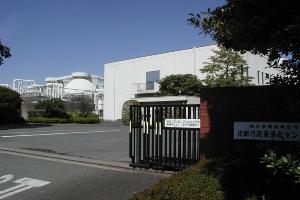
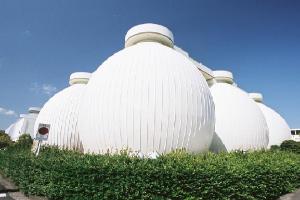
- Event information
- Facility tour
- Overview
- Characteristics
- Access
- Construction in the ground
- Hokubu No.2 Wastewater Treatment Plant
Return to the introduction of water reclamation centers
There are no events currently planned.
In Hokubu Sludge Treatment Plant, we accept facility tours.
If you would like to visit the facility, please follow the procedure below.
※Please note that the application method differs depending on the organization to which it belongs.
(1) Those who belong to overseas organizations, etc.
・International organizations such as the Japan International Cooperation Agency (JICA) and the Asian Development Bank.
・Government agencies and local governments such as the Ministry of Land, Infrastructure, Transport and Tourism and the Ministry of Economy, Trade and Industry (METI)
・Member companies of the Yokohama Water Business Council
Depending on the status of facility tours and construction, we may not be able to meet your request, so please consult us as soon as possible.
●How to apply:
・Please contact the person in charge below by e-mail or telephone at least two weeks before the desired date of inspection.
Management Promotion Section (Sewerage International Section)
TEL 045-671-3967 (Weekdays 9:00-17:00)
E-mail gk-gesuikokusai@city.yokohama.lg.jp
(2) Others
●How to apply:
At least one week before the desired date of the tour, please inform us of the desired date and time by e-mail or telephone, and make a temporary reservation.
After the temporary reservation, please submit the facility tour application at least 3 days before the tour date.
In addition, we may not be able to meet your request due to the acceptance status of facility tours and construction, so we recommend that you make a temporary reservation as soon as possible.
Hokubu Sewerage Center Recycling Officer (Hokubu Sludge Treatment Plant)
TEL 045-502-3738 (Weekdays 9: 00-17: 00)
E-mail gk-hokubugesuido@city.yokohama.lg.jp
Facility tour application (word: 26KB)
![]()
(3) Provision of experimental samples
We provide samples for experiments.
Example: Institutions related to sewerage and environmental conservation, universities and public research institutes
Companies with business results related to sewerage in Motoichi
●How to apply:
・Please contact the person in charge below at least one week before the desired date of delivery.
Hokubu Sewerage Center Recycling Officer (Hokubu Sludge Treatment Plant)
TEL 045-502-3738 (Weekdays 9: 00-17: 00)
E-mail gk-hokubugesuido@city.yokohama.lg.jp
Please submit the following application form after making a reservation by telephone.
Application for provision of experimental samples (word: 26KB)
![]()
If you would like to make a public announcement of the results of the experiment using the above samples, please submit the following application form.
Application for publication of experimental sample data (word: 24KB)
![]()
- About sludge treatment
- Sewage sludge generated during the process of sewage treatment is gradually reduced by performing treatment such as concentration, digestion, dehydration, etc., and ultimately incinerated and turned into fuel. In Yokohama City, sewage sludge generated from 11 water reclamation centers in the city is collected and processed at two sludge recycling centers. We are working to reduce construction costs and maintenance costs at management fee through intensive processing. In addition, we contribute to the creation of a recycling-oriented society by effectively utilizing digestive gas, incinerated ash, and fuel chemicals generated.
Sludge transmission equipment
This is a facility that pumps sludge generated at each water reclamation center to the sludge recycling center using a sludge pump.
Mud receiving equipment
This is a facility that accepts sludge sent from each water reclamation center, separates screen residue (garbage) and sludge, and sends it to a concentration facility.
Concentration equipment and digestive tank equipment
It is a facility that mechanically concentrates sludge, increases the concentration, and puts it into the digestive tank. Digestion tank equipment This is a facility that decomposes organic matter in sludge to reduce sludge and stabilizes sludge properties.
Dehydration equipment
Chemicals are added to the sludge that has been reduced in the digestion tank, dewatered cakes are produced, and sent to incineration equipment and fuel conversion equipment using a pumping pump.
Incineration facilities and fuel conversion facilities
The incineration equipment burns sludge cakes in an incinerator, and ash is used effectively as improved soil and cement raw materials.
Fuel conversion equipment is used to carbonize sludge cakes at low temperature and as an alternative fuel to coal.
- Mechanism of sludge treatment
- The sewage sludge sent to the sludge recycling center contains a large amount of water, so first use a concentrator to remove water. Next, digestion (*) is performed to reduce organic matter and stabilize properties. After that, it dehydrates again and burns in an incinerator into ash. Through these processes, the sewage sludge is reduced to a weight of 1/400, making it a sanitary condition free of odor. (PDF: 163KB) In addition, water removed during the reduction process is treated at a separation liquid treatment facility.
- ※ The sludge concentrated by the concentrator is stored in the digestion tank and is stirred in the digestion tank at about 36 ° C for about 30 days. In digestion tanks, organic matter in sludge is decomposed using the action of anaerobic microorganisms without sending air. This is called digestion, and digestion gas and water are generated from the decomposed organic matter. Digestion gas occurs frequently in winter and less in summer. (PDF:63KB)
In Hokubu Sludge Treatment Plant, sludge from five water reclamation centers in the northern region (Tsuzuki, Kohoku, Northern First, Kanagawa and Northern Second) is concentrated and concentrated, digested, dehydrated, incinerated and fueled.
| Items | Contents |
|---|---|
| Site area | 185,000m2 |
| Sludge treatment capacity | 12,500m3/day |
| Processing method | Concentration → Digestion → Dehydration → Incineration → Effective use of ash |
| Start of consolidation processing | September, 1987 |
Sludge Recycling Center Leaflet (PDF: 1,829KB) (The Sludge Recycling Center became the Sewerage River Bureau from Environmental Planning Bureau due to the organizational reform in April 2024.)
![]()
- Effective use of digestive gas
- About 60% of digestive gas is methane and about 35% is carbon dioxide, which contains hydrogen sulfide, which is harmful as an impurity component. Therefore, hydrogen sulfide is absorbed into the absorbent and removed using a desulfurization device containing the absorbent. Digestion gas has a calorific value of about half of city gas, and is used as a power source in the sludge recycling center for gas power generation and as a fuel for incineration of sludge. The amount of digestive gas power generation per year is approximately 32 million kWh, which accounts for approximately 83% of the electricity used in the facility (FY2015). This power generation is equivalent to about 10,700 households in ordinary households. In addition, waste heat generated from the engine is also used to heat the digestion tank.
- Effective use of electricity and water
- In addition to the digestive gas power generated by the center, the Tsurumi Plant uses the heat generated when the waste is incinerated, and the surplus power is used in Hokubu No.2 Wastewater Treatment Plant and Hokubu Sludge Treatment Plant, and if there is surplus power, it is sold to a power company. In addition, water treated in Hokubu No.2 Wastewater Treatment Plant is reused as plant water to reduce the amount of clean water used.
- Effective use of incinerated ash
- Sludge incinerated ash is mixed into construction soil and improved, and reused as construction backfill materials, contributing to a recycling-oriented society.
- Effective use of fuel chemicals
- It is used as an alternative fuel to coal, contributing to the reduction of greenhouse gases.
- Efforts to Prevent Environmental Pollution
- Air pollutants generated when incinerating sludge are also monitored 24 hours a day.
When you come from East Exit Tsurumi Station
Yokohama East Exit Bus Terminal 8th pole at Tsurumi Station
Rinko Bus Tsuru 08 bound for Fureyu
The nearest "Toagosei Co., Ltd. Yokohama Plant-mae" bus stop is the ninth stop, about 15 minutes.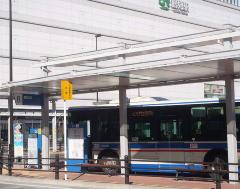
Get off at the "Toagosei Co., Ltd. Yokohama Plant-mae" bus stop and you will find the main gate.
Main gate of Hokubu Sludge Treatment Plant
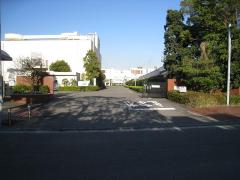
When you come by car
Turn right at the "Bentencho" intersection on Tsurumi Industrial Road (from Yokohama)
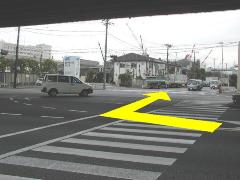
Turn right before the railroad crossing
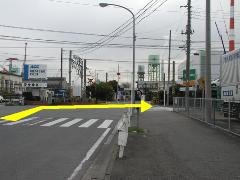
Turn left at the end
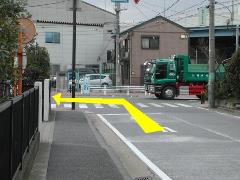
After passing the railroad crossing, there is a main gate on the left, about 1,200 meters away.
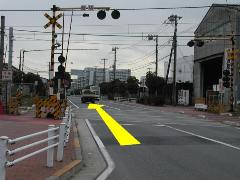
Main gate of Hokubu Sludge Treatment Plant

Floor plan of the hall
Turn left at the end of the main gate 150 meters back, and the office is on the first floor of the building on the right.
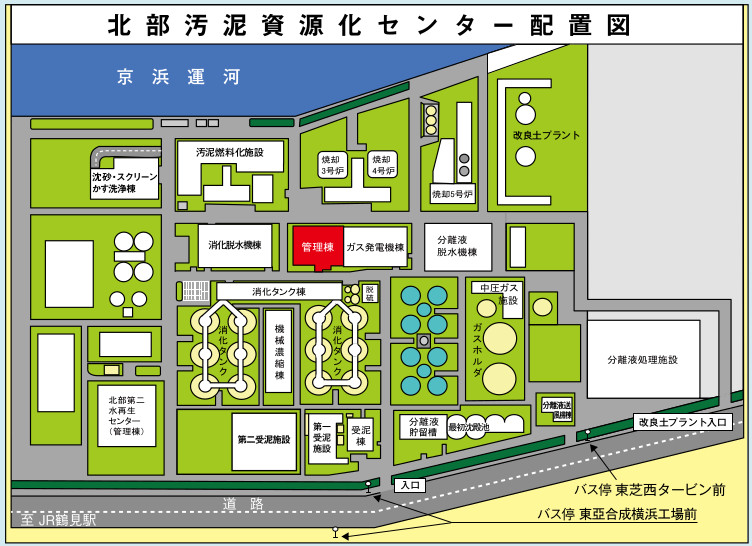
When constructing underground, make sure that the sludge pipe is close to each other.
You may need a separate PDF reader to open a PDF file.
If you do not have it, you can download it free of charge from Adobe.
![]() To download Adobe Acrobat Reader DC
To download Adobe Acrobat Reader DC
Inquiries to this page
Sewerage Department, River Bureau, Hokubu Sewerage Center (Hokubu Sludge Treatment Plant)
Telephone: 045-502-3738
Telephone: 045-502-3738
Fax: 045-502-2866
Email address: gk-hokubugesuido@city.yokohama.lg.jp
Page ID: 566-573-767







